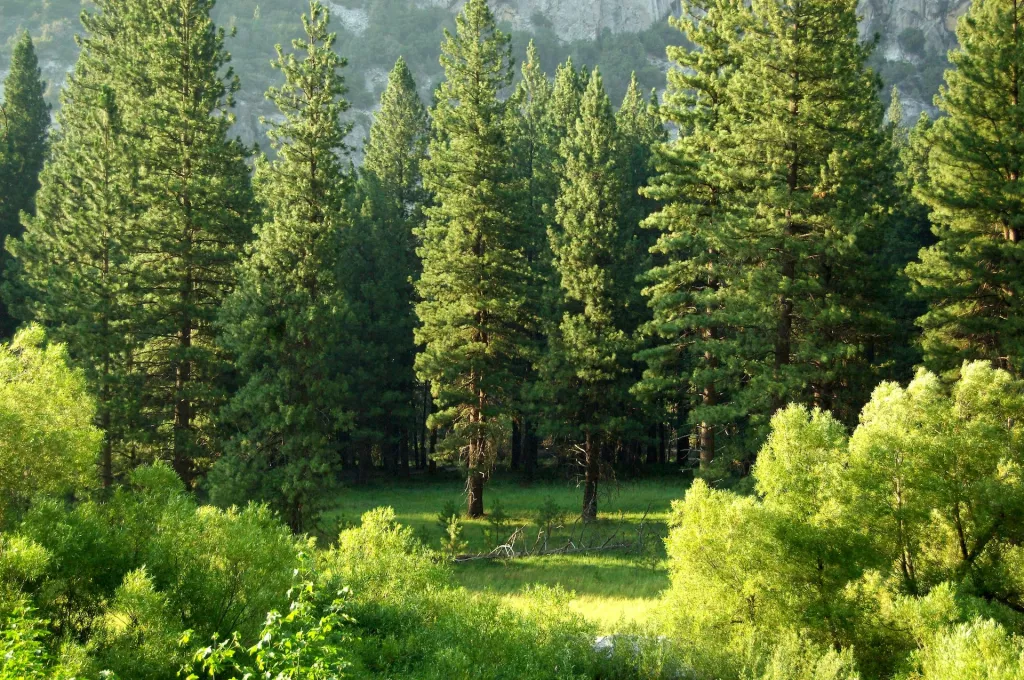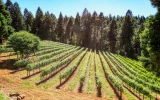Tree Farm Profit Per Acre (6 Different Species Compared)
How much profit you can expect to make per acre on a tree farm depends on factors such as the tree species you choose to grow. Some trees are more profitable than others, with varying growth rates, market demand, and timber quality. In this article, we'll compare the profit potential of six different tree species commonly grown on tree farms. From the stately oak to the fast-growing pine, each tree has its own unique qualities that can affect your bottom line.
Pine and eucalyptus trees can generate $1,000 to $10,000 in profit per acre; oak and maple trees, $2,000 to $5,100 per acre; teak trees, $10,000; and walnuts, up to $100,000. The attractiveness of the timber or other byproducts, such as fruit or nuts, will determine the market value of your harvest.
Once you understand the requirements and market demand for various tree species, they will guide you in determining the best mix of trees to plant for profit on your land. Walnut trees, for example, often take 20–30 years to reach harvestable size, but their dual potential of timber and nut production can offset the long waiting time for profit.
Summary
- To optimize the profit potential of your tree farm, you'll want to select species that are well-suited to your region's climate and soil conditions.
- It's best to consult with a professional forester or a local logging company to get a more accurate estimate for your specific situation.
- Oak trees can take 20–30 years to reach harvestable size, but their wood can fetch a high price on the market.
- The wood from teak trees is highly sought after for its durability and resistance to water damage.
- It may take a maple tree up to 30 years to reach the point of maturity for timber harvest, but you can start tapping the trees for sap after only a few years, offering a side source of revenue.

On this page:
Comparison of Profitability of 6 Tree Species
The table below shows a quick glimpse of how much profit you can expect per acre. The exact profit from growing these trees will depend on various factors, such as the cost of land, labor, equipment, and market demand.
| Tree Species | Profit per Acre |
|---|---|
| Pine trees | $1,000 to $10,000 |
| Eucalyptus trees | $1,000 to $10,000 |
| Teak trees | $10,000 to $15,000 |
| Oak trees | $2,200 to $5,100 |
| Maple trees | $2,000 to $2,800 |
| Walnut trees | $2,100 to $100,000 |
Pine trees grow relatively fast
Pine trees are a popular choice for farmers because they grow relatively quickly and are in high demand for construction, furniture, and paper products. Depending on the variety and your location, pines can grow 3 to 4 inches in diameter in 10 years. With proper management, your pine tree farm could yield a profit of up to $1,800 per acre, depending on stumpage price and timber quality.
The typical cost of a large pine tree is $30, while the cost of a log per 1000 board feet is about $60. On average, an acre of mature, merchantable pine trees can be sold for anywhere from $1,000 to $10,000. Additionally, any logging or harvesting costs would need to be factored into the final price.
Eucalyptus trees are suitable for warm climates
Eucalyptus trees are another fast-growing species, suitable for warm climates. They're prized for their pulpwood, which is used in paper production, as well as their oil, which has medicinal and insect-repellent uses. Eucalyptus trees can achieve significant growth within just a few years, making them an attractive option for quick returns on your investment.
The average value of a Eucalyptus tree with a circumference of 40 inches and a height of 60 feet is $5,040. Eucalyptus is often grown for its timber. The price of eucalyptus per tree can range anywhere from $2 to $20.
Teak trees produces durable wood
Teak trees are valuable hardwood trees native to Southeast Asia. The wood from teak trees is highly sought after for its durability and resistance to water damage, making it ideal for outdoor furniture and boat construction.
However, teak trees require a long growth period, often up to 25 years, before they can be harvested. This longer timeframe may be a factor to consider if you're looking for quicker returns on your tree farm investment. The average value of a teak tree with a circumference of 40 inches and a height of 60 feet is $21,312.
Oak trees have diverse uses

Oak trees are another hardwood species with strong market demand due to their diverse uses, such as in furniture and barrel construction. Oak trees can take 20–30 years to reach harvestable size, but their wood can fetch a high price on the market.
The development of a successful oak tree farm will require patience, careful planning, and maintenance, making it an option better suited for those with a long-term vision. The average value of a white oak tree with a circumference of 40 inches and a height of 60 feet is $8,472.
Maple trees provide sap that produce maple syrup
Maple trees offer a unique opportunity not only for timber production but also for tapping their sap to produce maple syrup, which can be a profitable cash crop. The wood from maple trees is used for furniture, flooring, and even musical instruments.
While it can take up to 30 years for a maple tree to reach maturity for timber harvest, you can start tapping the trees for sap after just a few years, providing a supplemental income source. The average value of a maple tree with a circumference of 40 inches and a height of 60 feet is $5,856.
Walnut trees are valuable for timber and nut
Finally, walnut trees are both a valuable timber crop and an edible nut crop. The wood is sought after for fine furniture and cabinetry, and the nuts can be sold as an additional income stream. However, like many other hardwoods, walnut trees require a significant amount of time to mature, often taking 20–30 years to reach harvestable size.
The dual potential of timber and nut production can offset the longer waiting time for profit in walnut tree farming. The average value of a black walnut tree with a circumference of 40 inches and a height of 60 feet is $9,240.
Profitability Factors that Affect Your Tree Farm

In this section, we will discuss the following aspects that will help you determine the potential profit of your tree farm: tree species, growth rates and yields, and market demand.
The right tree species for your farm
-
Pine trees: Pine trees are adaptable to a wide range of soil types and climates, but they tend to grow best in well-drained soils and moderate temperatures. The market value of pine trees can vary depending on the specific species and intended use of the wood.
-
Eucalyptus trees: Eucalyptus trees are native to Australia but have been widely planted in other parts of the world, including tropical and subtropical regions. They are adaptable to a wide range of soil types and climates, but they tend to grow best in warm and humid conditions. The market value of eucalyptus trees can vary depending on the specific species and intended use of the wood.
-
Teak trees: Teak trees are native to Southeast Asia but have been widely planted in other parts of the world, including tropical and subtropical regions. They prefer well-drained soils and warm temperatures, and they are sensitive to frost. The market value of teak trees is generally high due to the high quality of their wood.
-
Oak trees: Oak trees are native to temperate regions of the Northern Hemisphere and are adaptable to a wide range of soil types and climates. They tend to prefer well-drained soils and moderate temperatures. The market value of oak trees is generally high due to the high quality of their wood.
-
Maple trees: Maple trees are native to temperate regions of North America and are adaptable to a wide range of soil types and climates. They tend to prefer well-drained soils and moderate temperatures. The market value of maple trees can vary depending on the specific market conditions and availability of alternative sweeteners.
-
Walnut trees: Walnut trees are native to temperate regions of North America and are adaptable to a wide range of soil types and climates. They tend to prefer well-drained soils and moderate temperatures. The market value of walnut trees is generally high due to the high quality of their wood and nuts.
Growth rates and yields of each tree specie
For example, loblolly pine has a rotation age of 30 years and can achieve 436 trees per acre. Some factors that can influence growth rates and yields include:
- Tree spacing: can affect the amount of sunlight, water, and nutrients that each tree receives. Trees that are spaced too closely together may compete for resources and grow more slowly, while trees that are spaced too far apart may not fully utilize the available resources and may not reach their full potential.
- Fertilization: can provide trees with essential nutrients that they need for growth and development. Inadequate or excessive fertilization can have negative effects on tree health and productivity.
- Thinning: involves removing some trees from a stand to reduce competition for resources and allow the remaining trees to grow more vigorously.
- Pest and disease management: important for maintaining tree health and productivity. Pests and diseases can damage or kill trees, reducing their growth rates and yields.
Market demand for your chosen tree species
Consider the current market conditions and future trends for each tree species. Some tree species may have higher demand in certain geographical areas or industries. Examples of market demand for different tree species include:
-
Pine trees: Pine trees are commonly used for a wide range of products such as lumber, paper, and pulpwood, making them a valuable commodity. The demand for pine trees can vary depending on the specific species and market conditions.
-
Eucalyptus trees: Eucalyptus trees are commonly grown for pulpwood and paper production, as well as for essential oils and medicinal purposes. The demand for eucalyptus trees can vary depending on the specific species and market conditions.
-
Teak trees: Teak trees are valued for their high-quality wood, which is commonly used for furniture, flooring, and other high-end products. The demand for teak trees can vary depending on the specific market conditions and availability of alternative wood sources.
-
Oak trees: Oak trees are highly valued for their strong and durable wood, which is commonly used for furniture, flooring, and other high-end products. The demand for oak trees can vary depending on the specific species and market conditions.
-
Maple trees: Maple trees are commonly grown for their syrup, which is a popular sweetener. The demand for maple trees can vary depending on the specific market conditions and availability of alternative sweeteners.
-
Walnut trees: Walnut trees are valued for their high-quality wood and nuts, which are commonly used for furniture, flooring, and other high-end products. The demand for walnut trees can vary depending on the specific market conditions and availability of alternative wood and nut sources.
Maximize Your Tree Farm's Profits Per Acre

To maximize your profits per acre, focus on optimized planting density and efficient management practices. In this section, you'll learn how to strategically arrange your trees and manage your farm to extract the maximum returns from your land.
Optimized planting density for each tree species on your farm
Planting trees too close together can hinder growth and reduce overall yield, while planting them too far apart can result in underutilized land. Here are some general guidelines for various tree species:
-
Pine trees: The optimal planting density for pine trees depends on the specific species and the intended use of the trees. For example, if the trees are being grown for timber production, a planting density of 400 to 700 trees per acre is common, while a planting density of 1,000 to 1,500 trees per acre is common for Christmas tree production.
-
Eucalyptus trees: The optimal planting density for eucalyptus trees is typically around 500 to 1,000 trees per acre, depending on the specific species and intended use of the trees. Some eucalyptus species can be planted at higher densities of up to 2,000 trees per acre.
-
Teak trees: The optimal planting density for teak trees can vary depending on the specific site conditions and intended use of the trees. In general, a planting density of 400 to 500 trees per acre is common for teak plantations.
-
Oak trees: The optimal planting density for oak trees can vary depending on the specific species and intended use of the trees. For example, a planting density of 100 to 200 trees per acre is common for oak trees grown for timber production, while a planting density of 400 to 500 trees per acre is common for oak trees grown for nut production.
-
Maple trees: The optimal planting density for maple trees can vary depending on the specific species and intended use of the trees. For example, a planting density of 100 to 200 trees per acre is common for maple trees grown for timber production, while a planting density of 200 to 300 trees per acre is common for maple trees grown for syrup production.
-
Walnut trees: The optimal planting density for walnut trees can vary depending on the specific species and intended use of the trees. For example, a planting density of 100 to 200 trees per acre is common for walnut trees grown for timber production, while a planting density of 40 to 60 trees per acre is common for walnut trees grown for nut production.
Implement efficient management practices in your tree farm
-
Pruning and training: Regularly pruning and training your trees helps maintain their shape, encourages better fruit production, and reduces potential damage from pests or diseases. For example, Christmas tree farmers should aim to shear their trees annually to maintain their classic conical shape and increase their market value.
-
Pest and disease control: Tree farms are susceptible to various pests and diseases. By closely monitoring your trees and taking preventative measures, such as integrated pest management, you can reduce the risk of losses and maintain healthy, high-value crops.
-
Irrigation and nutrient management: Ensuring that your trees receive the right amount of water and nutrients is crucial for healthy growth and maximum yields. Monitor soil moisture levels and adjust your irrigation system accordingly, and perform regular soil tests to determine the optimal fertilization needs for your farm.
-
Harvesting and marketing: Timely and efficient harvesting of your trees helps maintain their quality and value. Additionally, developing a cohesive and targeted marketing strategy will allow you to reach your ideal customer base and earn a higher profit margin on your tree crops.
Tree Farm Basics for Your Investment

Land preparation for your tree farm
First and foremost, select a suitable location for your tree farm. Ensure you choose land with adequate sunlight, well-drained soil, and access to a water source. Consider testing your soil to determine if amendments are necessary for optimal tree growth.
Next, clear the land of any unnecessary obstacles, such as weeds or debris. You may also need to till the soil for improved aeration, which helps the roots of your trees establish themselves more efficiently.
Finally, plan and mark the layout of your tree farm so each tree species has ample space to grow. Different tree species have varying growth patterns, so space the trees accordingly to prevent overcrowding.
Plantation management on your tree farm
To ensure a healthy, thriving tree farm, it's crucial to nurture the trees throughout their lifecycle. Start by planting the trees correctly, taking care to follow the recommended guidelines for each species. Some trees may require specific soil types, watering needs, or pest management techniques.
Regularly monitor your trees for signs of diseases or pest infestations. Early detection and treatment can help prevent significant losses to your tree farm. In addition, perform routine pruning and trimming to maintain the proper shape and form of the trees, maximizing their aesthetic appeal and market value.
Harvesting time and method for your trees
When your trees reach maturity, it's time to harvest. The timing and method of harvesting will vary depending on the tree species your farm specializes in. For example, pine trees typically take around 10 years to reach lumber quality, while Christmas trees may take 8–10 years to mature.
Some trees can be harvested using machinery, while others may require manual labor. Regardless of the method, ensure you follow appropriate guidelines to maintain the health of your tree farm and promote sustainable growth.
Marketing your trees that are ready to sell
Reach out to potential buyers, such as woodworkers, landscape architects, and nurseries, to promote your tree farm. Emphasize the quality and sustainability of your trees to attract environmentally conscious clients.
In addition, consider diversifying your income by selling smaller products like seedlings, wood chips, or Christmas trees. These products can provide quicker returns on investment as they may have shorter growth periods compared to other tree species.



